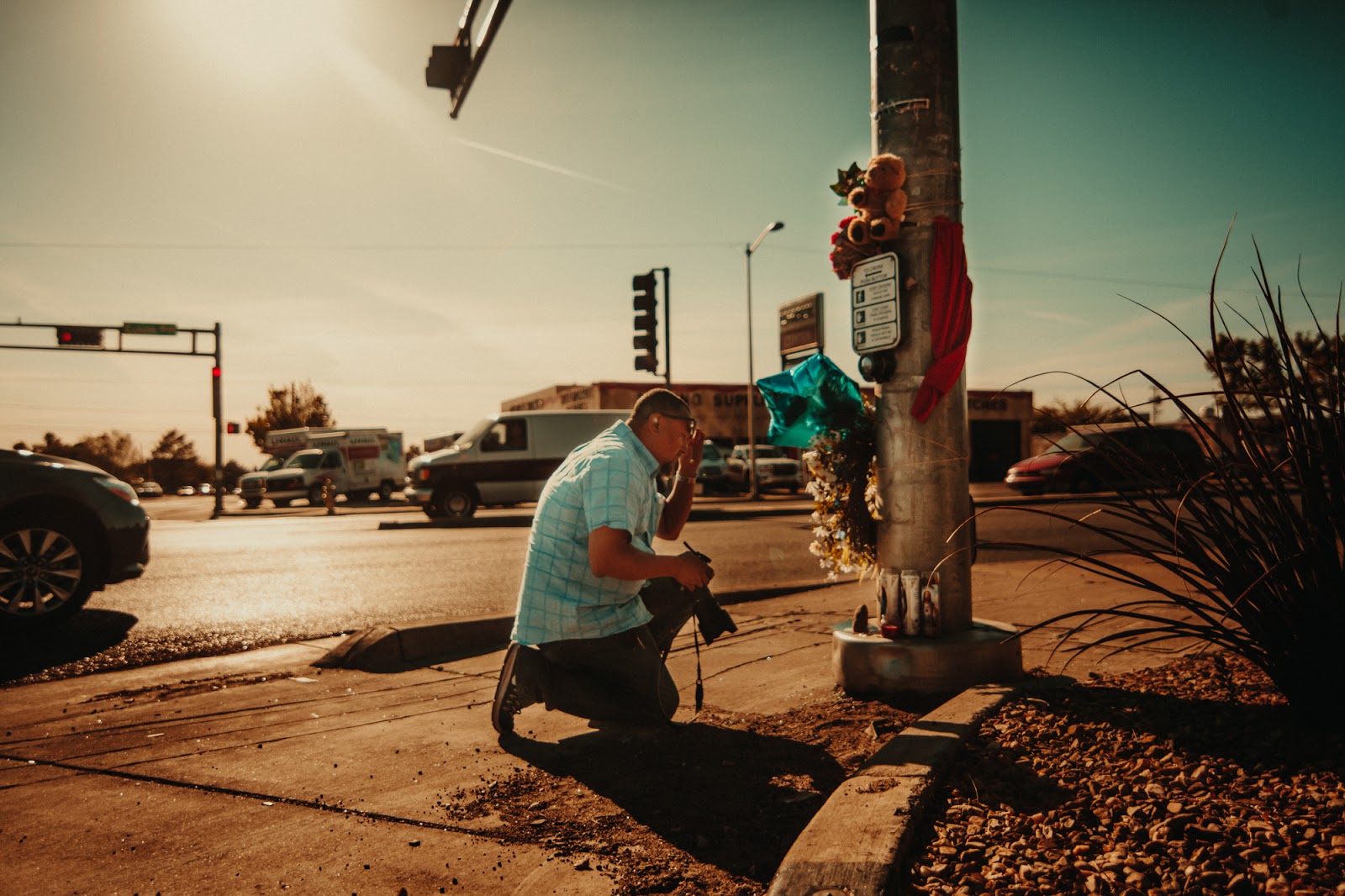Roberto Rosales, a photographer for the Albuquerque Journal, kneels to the ground in front of a new roadside memorial on the northeast corner of Eubank Boulevard and Indian School Boulevard. His expression is mournful as he photographs the memorial’s items, including a teddy bear and a small red Superman cape hung from stoplight pole. The shrine memorializes the death of Joel Suina, a 6-year-old boy who died days after a police officer crashed into his mother’s car.

Megan Aguilar / New Mexico News Port
This is just one of the many tragic crime stories for which Rosales has taken pictures in his 16 years at the Journal.
Like most general assignment photographers, Rosales covers a wide array of beats with his photojournalism, including sports, meetings and more. His approach to crime stories, however, is slightly different from his approach to other events.
“I treat every type of photo assignment with [a] degree of respect, ” Rosales said. “When you arrive at a crime scene, be ready for everything and read body language… I have this approach where I don’t want to be a distraction to [first responders and rescue personnel].”
He said his main concerns when taking photos at crime scenes or the scene of a tragedy are common sense and safety, staying out of the way of paramedics and police, and being respectful of those affected by the events.
“A lot of people mistake us for being paparazzi-like, but that’s an insult,” he said. “I’m a human being first, a photojournalist second.”
Dean Hanson, the photo editor at the Albuquerque Journal, frequently works with Rosales to select and edit his photos for the paper. He said their paper has a policy to generally avoid pictures of bodies, even covered.
“They don’t contain any real information other than somebody died,” Hanson said. “What we try to do is focus on the reaction… You show the impact of a loss of a life in the faces of the living.”
Rosales said it can be hard to do this job because a photographer sometimes can’t help but get attached to the subjects of his or her photos. For one of the first assignments he had with the Albuquerque Journal, he got involved with the story of a little girl killed in a drive by shooting when he translated for the parents of the victim, who didn’t speak English.
He also said those he becomes attached to stay with him, even after they’re gone. He spoke of Officer Daniel Webster, who was shot fatally at a Walgreens in October 2015. Rosales said one picture he took of Webster in August 2015 stayed with him. In the photo, Webster was sitting in his patrol car at night with the light in the vehicle on and shining on his face. Rosales said he took a picture because he thought it made a nice moment.
“Little did I know that man would die two months later,” Rosales said. “We used those photos to humanize Officer Webster… There’s not a day that goes by when I don’t think of him as I drive by Eubank and Central.”
To cope with witnessing crimes and tragedies for his photos, Rosales said he likes to put his mind in a more positive place by watching cartoons and teaching photography at UNM.
“Everybody has a way to decompress. I like to watch movies, listen to music, and teach. I like teaching at the university. It gives me a little bit of a break from hardcore news, photojournalism and seeing really bad things out there,” he said.
Despite the difficulties that come with the job, Rosales said he couldn’t see himself doing anything else.
“This is what I want to do,” he said. ”I want to tell stories.”
Follow Skylar and Megan on Twitter.